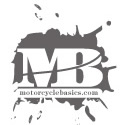Motorcycle Lane Position
It always amazes me when I see riders that are riding in the incorrect lane, or lane position.
First I will talk about lane position. The average lane on a road or highway is roughly 8 feet wide, while in comparison the average motorcycle is only 2 to 3 feet wide. This means that there is a lot of unused space around a motorcycle. Wile having space has its advantages there are also a few disadvantages as well.
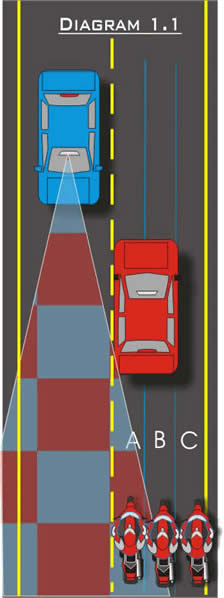
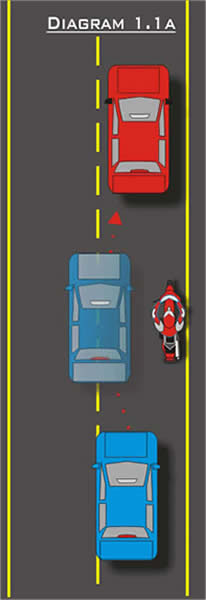
Diagram 1.1 illustrates that a lane can be divided in to 3 mini-lanes, left (A), middle (B) and right (C). Which part of the lane should a rider be in? Position (A) or the (blocking position) would be the best choice most of the time. I say most of the time because, sometimes the situation may call for a rider to chose another part of a lane (B) or (C) for short periods of time. It gives the best opportunity for a rider to see as well as be seen by other vehicles.
I do not recommend riding in the middle part of the lane because that is the area where a lot of debris tends to gather, also that is usually where you will find oil, coolant and other slick fluids that are deposited from cars and trucks.
As for position (C) the drawbacks are that the rider may not be visible to other drivers, as well as it might encourage other drivers to try and share your lane and shown in Diagram 1.1A. Where the driver of the blue car attempts to pass the rider in the same lane, which could force the rider off the road.
So we see that on a single lane road the blocking position is on the left side of the lane, but what about a two lane road?
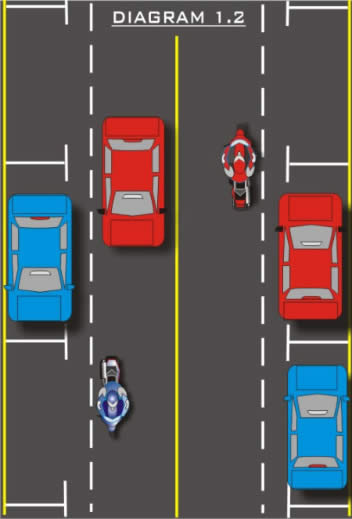
Diagram 1.2 shows the blocking position for the left lane of a two lane roadway.
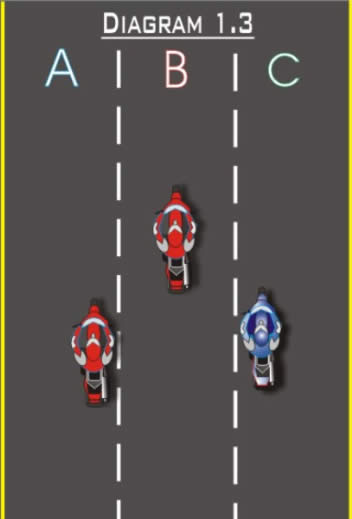
Diagram 1.3 And finally, when on a roadway or highway with 3 or more lanes, what lane should you ride in?
The best advice that I can give is to ride in the outside lanes, and try to stay away from the middle lanes.
These outside lanes (A & C) are considered to be safer because the rider only has to contend with possible hazards from one side.
While the rider in the middle lane (B), is vulnerable from both sides. Now I am not telling you that you should never ride in the middle lanes because, that would be unrealistic. I'm only saying that you should be aware of the dangers and try to limit the amount of time that you spend there.


